UP TO THE MINUTE
How to know when to apply a roof coating

By KARNAK.
When applied at the right time, roof coatings are highly effective at extending the lifespan of aging roofs. Learn when the right time is for coating your roof.
No matter how well-built a roof is, it is natural for even the most resilient and durable materials to degrade over time. Factors such as the sun’s UV rays, weather conditions and expansion and contraction are big contributors to this degradation. Regular and proactive maintenance can give a roof the longest lifespan possible with the least loss in value. Further, it can prevent the building from interior damage caused by elements such as water infiltration. A major part of this regular maintenance can come in the form of roof coatings or sealants. The experts at KARNAK have put together a quick guide to help you understand all the considerations when it comes to deciding if a repair, a roof coating/system or a reroof is better for your situation.
Schedule a roofing inspection first
Prior to making this decision, a roofing inspection from a licensed roofing expert should be conducted to determine the current roof condition. Typically core samples are harvested from the roof from suspected areas and evaluated for composition and condition. The roof is also checked for water leaks. If there are signs of extensive water-damage underneath and throughout the majority of the roof, then a full roof replacement is recommended as the integrity of the roofing structure is severely compromised. Keep in mind that a full roof replacement is costly and highly disruptive to building operations and occupants due to noise, debris etc. However, if the roof is in overall good condition with some areas needing repair, a coating restoration system provides the building owner an economic and effective alternative to restore their roof to peak performance condition.
Utility savings and cooler building temperatures
In addition to restoring the integrity of your roof membrane, reflective roof coatings will reflect the solar UV and heat which will slow the degradation, reduce expansion and contraction of the roof by reflecting much of the latent heat which would be absorbed by your roof and building. This may dramatically cut utility costs during summer months by reducing the use and stress to run HVAC systems to keep the interior of the building at comfortable temperatures. At the height of summer as temperatures soar, dark-colored roof surfaces can reach temperatures that can burn human skin, while white reflective coating (501 Elastobrite, 502 Elastokote or 670HS Karna-Sil Ultra) can reduce those temperatures significantly.
Sustainable options
It is worth noting that roof coating application does not typically disrupt the operations of the building itself. Since application of roof coatings involves less materials, a smaller crew of contractors is needed. The roof coating is relatively lighter weight in comparison to a full roof replacement which involves the labor-intensive roofing tear off and subsequent installation of new roof membrane. Further, are the sustainable implications of selecting a roof coating system. This option would prevent discarded roofing materials from becoming landfill waste, or prevent the additional energy required to fully breakdown and recycle the residual bulk material. As for the roof coating, Karnak offers low-VOC (Volatile Organic Compounds) options, to even further reduce the carbon footprint of selecting a roof coating.
Original article source: Karnak
Learn more about KARNAK Reflective Coatings, Sealants and Cements in their Coffee Shop Directory or visit www.karnakcorp.com.



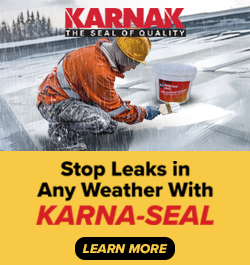







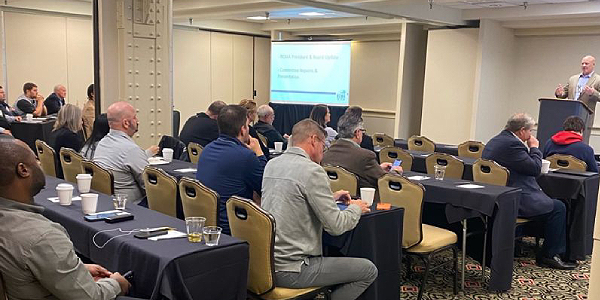
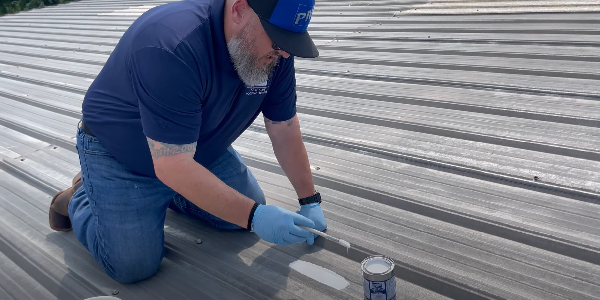
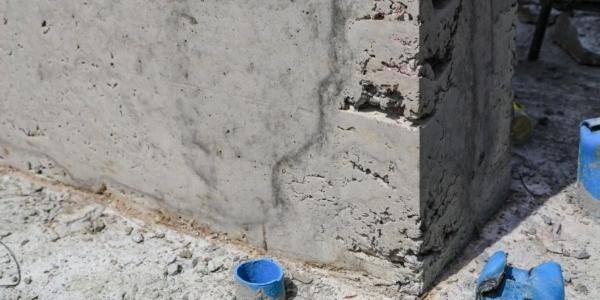

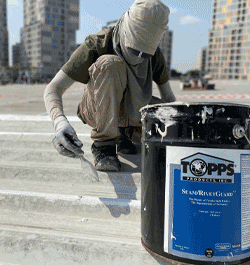



Comments
Leave a Reply
Have an account? Login to leave a comment!
Sign In